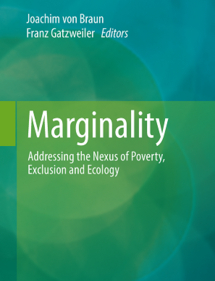Project TIGA
Ex-ante technology assessment and farm household segmentation for inclusive poverty reduction and sustainable productivity growth in agriculture (TIGA)

The objective of this project is to enhance the inclusion of all poor small farming communities in agricultural technology innovations. Specifically, the project “Technology assessment and farm household segmentation for inclusive poverty reduction and sustainable productivity growth in agriculture” (TIGA) seeksto create a thorough understanding of the interactions between technology needs, farming systems, ecological resources and poverty characteristics in the different strata of the poor, and to link these insights with technology assessments in order to guide action to overcome current barriers to technology access and adoption. In support of the objective to enable all segments of the poor to benefit from crop technology innovations (directly or by secondary growth linkages) the project also aims at identifying technology choices in combination with additional innovation measures for reaching all strata of the rural poor.
Objective 1: Undertake a market segmentationof the rural poor across different agro-ecological zones and identifybarriers that prevent each group from accessing agricultural technologies.
- Develop maps overlaying poverty incidences and agro-ecological environments (including spatial linkages to ‘bread basket’ areas) for Sub-Saharan Africa and South Asia in cooperation with partners.
- Describe and characterize the market segments/strata of the poor for each agro-ecology zone and associated farming system.
- Identify social, ecological and cultural barriers (marginality barriers) across the market segments/strata of the poor that hinder access to and adoption of new agricultural technologies in the surveyed areas.
Objective 2: Conduct an ex anteassessment of major agricultural crop innovationsand productivity growth programs to evaluate their potentials with respect to the different poverty strata/market segments.
- Design a comprehensive ex-ante assessment methodology that captures direct and indirect effects of technological change and agricultural growth (technology multipliers and spatial linkages within and between marginal and high potential areas).
- Undertake needs assessments across the different poverty strata/market segments for the relevant technology options in the study areas.
- Map characteristics of agricultural technologies suitable for the study areas across needs of different strata to identify crop technology priorities across groups as well as requirements for R&D and institutional/policy interventions to overcome the identified barriers.
Objective 3: Identify options for extending access to and uptake of major crop innovations to include all strata of the rural poor (directly or indirectly).
- Assess major programs of public and private sector entities that are designed to foster agricultural productivity growth in the study areas for their reach of the different market segments/strata of the poor.
- Map gaps in reach of programs with respect to different market segments/strata.
- Help design options to reach currently marginalized strata that would have the potential for the adoption of new agricultural technologies in the context of an African Green Revolution and foster multiplier effects of technology innovations.
Objective 4: Facilitate coordinated efforts across development actors and engagement of the poor to overcome marginality barriers and scale up technology coverage across different market segments.
- Develop communication strategies and platforms to form networks of development practitioners for overcoming marginality barriers.
- Explore the use of new communication technologies to include the voice of the different strata of poor farmers in the dialogue.
- Develop a roll-out strategy for each study area based on the assessment of demand and supply across different market segments/poverty strata and crop technologies.
Countries:
Bangladesh, Ethiopia, India (Odisha, Bihar), Ghana
Keywords:
Poverty strata, cropping technology innovations, adoption, inclusion, access

News
Related Publications
Institutional environments for enabling agricultural technology innovations: The role of land rights in Ethiopia, Ghana, India and Bangladesh by Manuel Schädler and Franz W. Gatzweiler (ZEF Working Paper Series No. 119)
» Download
Mapping marginality hotspots and agricultural potentials in Bangladesh by Mohammad Abdul Malek, Md. Amzad Hossain, Ratnajit Saha and Franz W. Gatzweiler (ZEF Working Paper Series No. 114)
» Download
Please find more here.




